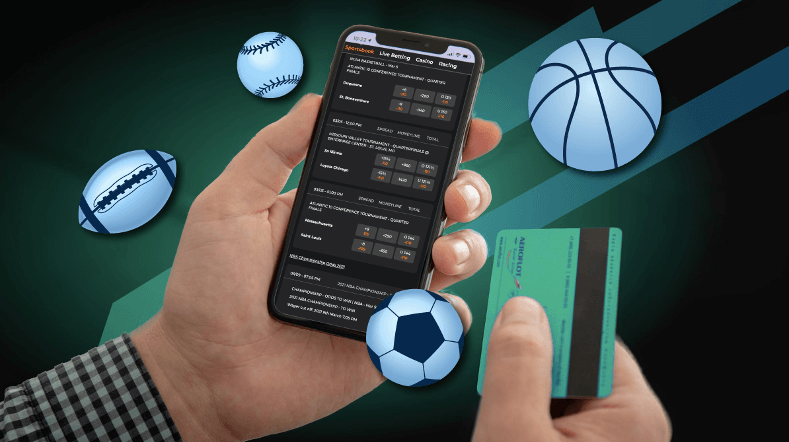
How Blockchain is Changing Mobile
In recent years, the mobile technology landscape has witnessed transformative changes, driven in part by the innovative capabilities of blockchain technology. This cutting-edge technology is not just confined to cryptocurrencies; it is making significant inroads into various sectors, including healthcare, finance, and logistics.
Blockchain’s decentralized nature introduces a paradigm shift that enhances security and user autonomy, thus influencing the way mobile applications and services are developed and used.
To understand the impact of blockchain on mobile technology, we must first delve into the fundamentals of how blockchain works and then explore its implications for mobile applications.
For further insights on the intersection of blockchain and mobile, you can visit How Blockchain is Changing Mobile Casinos in Bangladesh https://cashwin-germany.com/.
Understanding Blockchain Technology
At its core, blockchain is a distributed ledger technology that provides a secure and transparent way to record transactions across multiple computers. This decentralized network ensures that no single entity has control over the entire chain, thus minimizing the risk of fraud and hacks. Each block in a blockchain contains a set of transactions, and once a block is added to the chain, the data it holds becomes immutable. This means it cannot be altered without changing all subsequent blocks, which would require consensus from the majority of the network participants.
The Connection Between Blockchain and Mobile
Mobile devices are becoming the most widely used technology worldwide, and integrating blockchain with mobile applications can enhance their functionality and security. Let’s explore some of the key ways in which blockchain is changing the mobile landscape:
1. Enhanced Security

Security is one of the foremost concerns in mobile technology, particularly in applications that handle sensitive data, such as banking apps or health information systems. Blockchain can significantly enhance security by providing a decentralized network where transactions are verified by multiple nodes. This reduces the risks of data breaches, fraud, and identity theft.
2. Improved Privacy
Blockchain allows users to control their data and share it selectively. Traditional mobile apps often require users to surrender their personal data to access services. With blockchain, users can maintain their privacy and share only the necessary information, enhancing user confidence and compliance with increasingly stringent privacy regulations such as GDPR.
3. Decentralized Applications (DApps)
The rise of decentralized applications (DApps) powered by blockchain is shifting the development and operational landscape of mobile applications. These applications run on a blockchain or P2P network, eliminating the need for intermediaries. Developers can build DApps that are more resistant to censorship and offer greater transparency and trust in their operations.
4. Streamlined Transactions
Blockchain can facilitate faster and cheaper transactions, especially in the context of cross-border payments. Traditional mobile payment systems often come with high fees and long processing times. By utilizing cryptocurrencies as a means of payment, blockchain can remove intermediaries and reduce transaction costs, making it easier for users to make payments.
5. Tokenization and Reward Systems
Blockchain technology enables the tokenization of assets, which can be particularly beneficial for mobile platforms. Apps can create their own tokens to incentivize user behavior, improve engagement, or even facilitate peer-to-peer transactions. For instance, a fitness app could reward users with tokens for meeting exercise goals, which they could redeem for discounts or services within the app.

Blockchain and Consumer Trust
One of the biggest challenges in the mobile industry is consumer trust. With increasing reports of data breaches and misuse of personal data, users are becoming more wary of the applications they use. Blockchain can play a critical role in fostering trust through transparency and accountability. By providing a public ledger of transactions, users can verify the authenticity of the information presented by an application or service, which instills confidence.
Challenges Ahead
Despite the benefits, integrating blockchain into mobile applications is not without its challenges. Issues such as scalability, energy consumption, and user education must be addressed. Many current blockchain networks struggle to handle a large number of transactions quickly, which could hinder performance and user experience. Additionally, the energy-intensive nature of some blockchain technologies raises concerns about sustainability.
The Future of Mobile and Blockchain
The future of mobile technology, intertwined with blockchain, promises to be dynamic and innovative. As solutions to current challenges are developed, we can expect to see a surge in the adoption of blockchain-based mobile applications. This will likely lead to a more secure, private, and user-centric mobile environment.
Conclusion
In conclusion, the integration of blockchain technology into mobile applications is paving the way for a new era of digital interaction. As users demand more security, privacy, and transparency, the mobile industry must adapt to these needs by leveraging blockchain’s capabilities. The changes that blockchain brings to mobile are just beginning, and as technology continues to evolve, it holds the potential to redefine how we interact with our devices and services in our daily lives.